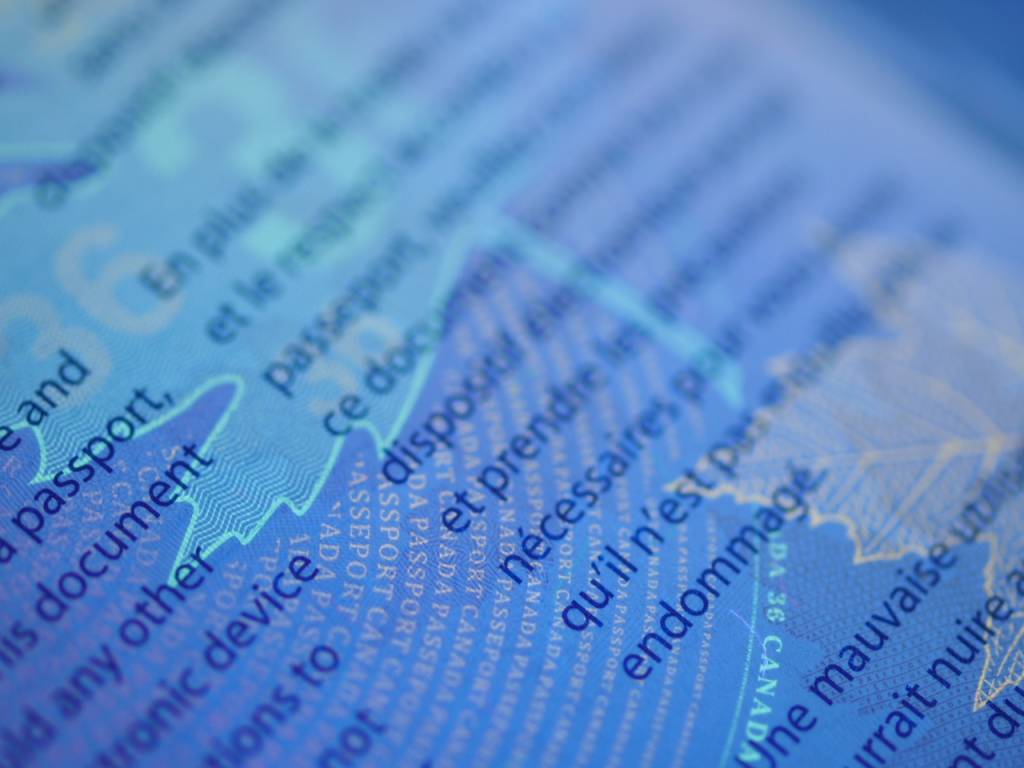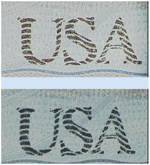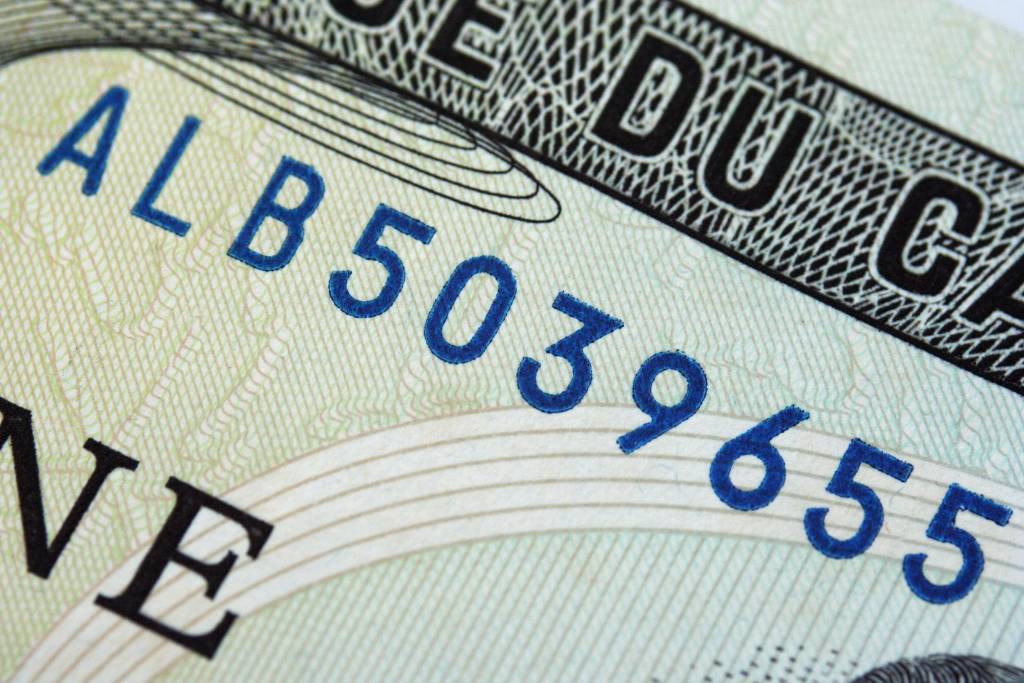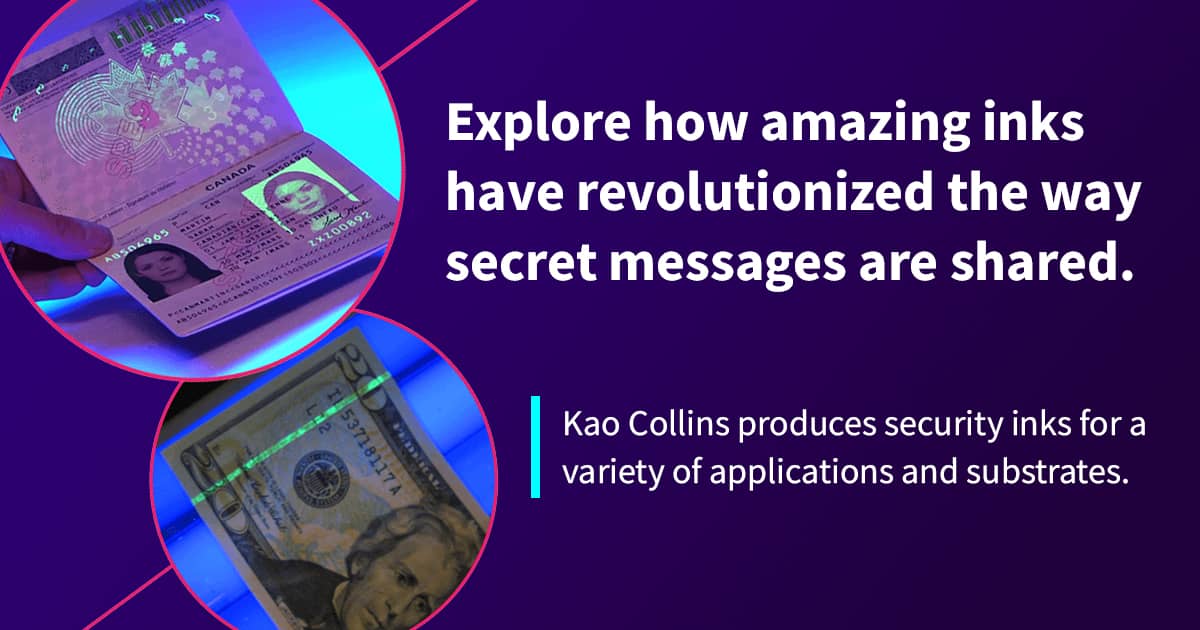
“Secure” Does Not Always Mean “Invisible”
 One common misconception about security inks is that they are all essentially invisible inks. While many applications of security ink do take advantage of invisible ink, there are a variety of visible security ink solutions, as well.
One common misconception about security inks is that they are all essentially invisible inks. While many applications of security ink do take advantage of invisible ink, there are a variety of visible security ink solutions, as well.
For example, many passports contain photosensitive ink that is visible to the naked eye but changes color or disappears when placed under a UV light. On U.S. passports, the letters “USA” are printed with a security ink that appears gold when viewed from one direction, then green when viewed from another.
LEARN MORE | Glossary of inkjet printing terms
Many people assume security inks are only for protecting important documents like passports and paper currency, but that isn’t the case.
See Inks for Barcoding and Marking
Get Started
Uses of security inks:
- Concert and sports tickets
- Coupons
- High-dollar branded products like watches and purses
- Prescription medicine bottles
- Lottery tickets
With such wide-ranging applications, security ink doesn’t just protect consumers from master forgers––it protects them from fraud, deception, and (in the case of pharmaceuticals) physical harm.
The future of the security ink market looks bright, with totals close to $1 billion and expectations of achieving a compounded annual growth rate (CAGR) of 4% through 2027.
What Makes Invisible Ink ‘Invisible’?
By definition, ink does not require color. While dyes and pigments are what give ink its color in most applications, the same dyes and pigments can be formulated to be naked to the visible eye for security applications.
Additionally, taggants – particles added to ink that react to the proximity of a unique “reader” or verifier – are typically microscopic.
Because invisible ink does not have color by design, most applications of invisible security ink involve a taggant that reacts with a specially designed camera, light, or scanner. When implementing security ink, the taggant is developed to react only with proper equipment using a UV, infrared, or near-infrared light at a specific wavelength.
While heat- and chemical-activated inks do exist, those are more popular in science experiments for children than they are in enterprise applications.
Curious about security inks for your business? Talk to our experts.

Source: Wilson Hui
How are Security Inks Detected?
Just how specific is a security ink’s taggant to the scanner used for detection? That depends on the level of security needed.
In less secure applications, the security ink reacts under a broad range of wavelengths and scanning devices. For example, the security ink on a concert ticket might fluoresce under any blacklight. Meanwhile, in high-security cases, the taggant reacts only under a light calibrated for that security ink’s taggant.
In short, invisible inks mix components to create a fluid that is transparent to the naked eye, but reactive (and visible) under certain operating conditions.
How are Security Inks Created?
To create a security ink for a custom application, ink manufacturers must consider a variety of elements:
Questions to Determine the Right Security Ink
- Substrate – What material will the ink be printed on? How can we ensure the ink adheres properly to the substrate?
- Operating conditions – Will the printed item be used once or many times?
- Visible properties – Does the ink need to be invisible to the naked eye?
- Detection mechanism – Is there specific equipment that will be used to validate authenticity (as in light-sensitive ink on a passport), or will it be verified by the naked eye (as in the watermark on a U.S. $20 bill)?
- Security level – Are there other security protocols being implemented for the application? Just how secure does this item need to be?
- Printing – What production speed needs to be maintained? What printing equipment or technology will be used?
These questions help ink manufacturers to develop security ink formulations that meet their customer’s needs for privacy and crime prevention.
Of course, these discussions aren’t limited to ink manufacturers. High-security solutions often involve ink manufacturers working along with a printer, plus the security company that provides the taggant activated in the security ink. Finally, whoever manufactures the machine used to activate the taggant and confirm the authenticity of the ink.
Security Ink Printing in the Age of Inkjet
Security inks have been around for a long time, but inkjet technology innovations have greatly expanded their availability and capabilities.

Inkjet printing can allow customization on the individual level
Because inkjet printing requires minimal setup time, printed security ink can be customized at a per-unit level. For example, unique SKU markings on pharmaceutical bottles can help identify theft and counterfeiting at all stages.
Security ink has obvious value for businesses, but printing with digital inkjet adds to their value by reducing printer downtime and expanding production line capabilities. Consumers also benefit, as more companies adopt safety measures like security ink to protect them from fraud, crime, and harm.
Want to know more about security inks? Contact our experts.







